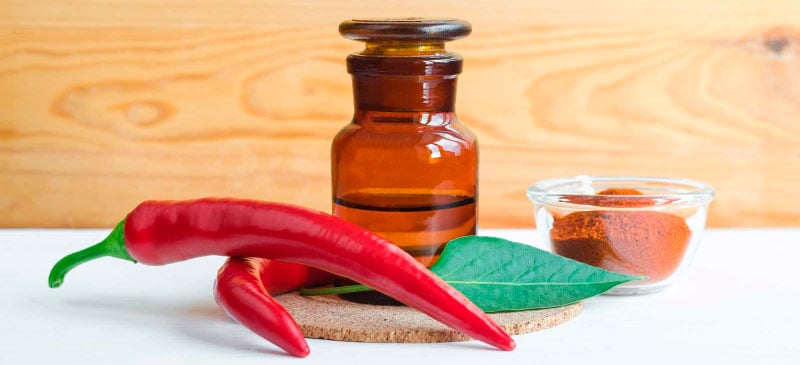This Dr. Axe content is medically reviewed or fact checked to ensure factually accurate information.
With strict editorial sourcing guidelines, we only link to academic research institutions, reputable media sites and, when research is available, medically peer-reviewed studies. Note that the numbers in parentheses (1, 2, etc.) are clickable links to these studies.
The information in our articles is NOT intended to replace a one-on-one relationship with a qualified health care professional and is not intended as medical advice.
This article is based on scientific evidence, written by experts and fact checked by our trained editorial staff. Note that the numbers in parentheses (1, 2, etc.) are clickable links to medically peer-reviewed studies.
Our team includes licensed nutritionists and dietitians, certified health education specialists, as well as certified strength and conditioning specialists, personal trainers and corrective exercise specialists. Our team aims to be not only thorough with its research, but also objective and unbiased.
The information in our articles is NOT intended to replace a one-on-one relationship with a qualified health care professional and is not intended as medical advice.
Capsaicin Benefits for Cancer, Diabetes & the Brain
January 24, 2023

Do you love the spicy flavor that peppers have to offer? Then you’re in luck, because capsaicin may help you prevent cancer, fight diabetes and even relieve pain.
Known as the spice factor in peppers, capsaicin gives those delicious veggies their heat. With the exception of the bell pepper, capsaicin is generally synonymous with peppers. It’s also one of the features of cayenne pepper that make it so beneficial.
With a massive and ever-growing body of research supporting it, there can be little doubt that capsaicin has the potential to revolutionize more than one traditional method of treatment in the medical community. Read on to find out how this compound works and the incredible properties it has.
What Is Capsaicin?
As a molecular compound found in spicy peppers (including chili peppers, poblano peppers, serrano peppers and jalapenos), capsaicin has no dietary content, such as calories or additional nutrients. It’s found in every part of the pepper except for the seed, although the highest concentration of capsaicin is found in the inner wall where the seeds attach.
While many find the heat of these peppers exciting for creating YouTube videos of themselves eating the hottest ones they can get their hands on, capsaicin is valuable for more than just entertainment. It’s been a proven aid to weight loss, the fight against cancer and even chronic pain. This is because capsaicin binds to a vanilloid receptor known as TRPV1, which is signaled by heat and also receives signals when cells in the body are physically burned or injured.
Once the capsaicin molecule has bound to the TRPV1 receptor, the brain is signaled that a hot or burning event has occurred and, in turn, causes a mild inflammatory reaction meant to repair the cells affected. It’s by this reaction that many of capsaicin’s benefits probably occur.
Health Benefits
1. May Be Helpful in Treating Cancer
Of the many benefits consuming capsaicin has to offer, few have been reviewed as much as its powerful effect against cancer. In general, capsaicin is a top cancer-fighting food and is found to have positive effects on shrinking tumors, preventing metastasis (new tumors found away from the original cancer site), causing apoptosis in various cancer models and even potentially preventing cancer from occurring in the first place.
For example, various studies show capsaicin can effectively fight prostate cancer, including a 2006 study at the UCLA School of Medicine, stating it has a “profound antiproliferative effect” on this type of cancer. Researchers found that taking capsaicin orally significantly stopped the spread of prostate cancer cells as well as caused apoptosis (cell death) in more than one type of prostate cancer cell.
Additionally, capsaicin has the ability to induce apoptosis in specific breast cancer cells. A breakthrough study released in South Korea found capsaicin may also help kill an additional type of cell: breast cancer stem cells. This discovery is especially important because the stem cells that remain after the other cancer cells have died are the ones responsible for recurrences of the disease.
There’s also some animal research suggesting that capsaicin can help decrease the size and frequency of certain lung tumors.
Interestingly, capsaicin also has a cancer-related benefit outside of cancer cells. It’s also available in cream form that’s used for a variety of ailments, including mouth sores that are common side effects of chemotherapy and radiation therapy.
2. Decreases Incidence of Cluster Headaches
Using capsaicin is a common pain relief technique. One specific pain remedy that commonly includes the cream form of this natural pain reliever is the treatment of cluster headaches. Different from migraine or tension headaches, these recurring, specific headaches are debilitating and can last for six to 12 weeks.
There are many lifestyle and dietary options that are useful in treating them, including the application of capsaicin cream to the inside of a nostril on the side of your head suffering the headache. By repeatedly applying the cream, subjects found the frequency of their headaches decreased for up to 60 days after ending this treatment option in a study conducted by the Institute of Internal Medicine and Clinical Pharmacology at the University of Florence, Italy.
3. Relieves Pain
Capsaicin is a commonly known natural painkiller. The reasons for this are widely unknown, although scientists are uncovering more about the mechanisms it uses to provide relief. It seems that, in large part, capsaicin provides analgesic relief by activating the TRPV1 receptor, which then causes the brain to release a neurotransmitter called “substance P.”
Especially in cream form, it’s been used for many years to treat pain related to osteoarthritis, rheumatoid arthritis and fibromyalgia, as well as certain kinds of joint pain.
A 2021 study indicated that capsaicin effectively helped relieve neuropathic pain, without affecting the motor and large nerve fibers involved in sensory function.
Researchers also investigated a method of injecting highly purified capsaicin into cartilage and tendons connected to a damaged rotator cuff. While this did not speed the healing process as initially expected, it did significantly alter pain responses, making it a good candidate for pain treatment for this condition.

4. Treats Psoriasis
In addition to treating pain, capsaicin has been long known for its ability to treat various skin conditions, including the dry, itchy skin of psoriasis. Substance P seems to be an effective treatment for this condition, as research shows that continued application of capsaicin cream shows a dramatically decreased amount of psoriasis breakout on the skin.
However, patients did report that the initial applications of capsaicin cream came with some minor burning, itching and stinging, which went away after the first several applications.
5. Aids in Management of Diabetes
Like many features of healthy foods, capsaicin is very useful when aiming to prevent and treat diabetes. Consistently consuming foods high in this nutrient has been proven to improve the blood sugar and insulin reactions in both men and women, and also in women with gestational diabetes.
A painful condition associated with diabetes, diabetic neuropathy, may also be treated with capsaicin cream to decrease pain responses.
6. Helps in Weight-Loss Efforts
If you’re trying to lose weight, you should probably consider eating capsaicin-rich foods, such as chili peppers. Research has found that eating these spicy foods may lower body weight, speed metabolism, help burn fat and suppress appetite in animals.
7. Helps Protect the Brain
More recently, studies show that capsaicin can help the brain and central nervous system in various ways. In animal studies, it appears to reduce neurodegeneration and memory impairment for Alzheimer’s patients. In animal models of stroke, it reduces the area of infarction and improves neurological outcomes.
When it comes to Parkison’s, capsaicin can be considered as potential neuroprotectant, fighting against oxidative damage and lessening behavioral impairment..
How to Use
The simplest way to introduce capsaicin into your system is by eating foods that contain it, namely, all pepper varieties except for the bell pepper, which contains no capsaicin due to a recessive gene it contains. If you aren’t used to eating spicy foods, it’s important to take it slowly and begin with very mild varieties before working your way up to that Carolina Reaper.
You may also purchase capsaicin in supplement form, often referred to as “cayenne powder pills,” or in the form of a cream. In the latter form, specifically, you’ll be able to enjoy its external benefits, such as treating psoriasis, as well as some pain benefits, like treating cluster headaches and relieving joint and muscle pain.
History
Chili peppers have been around for quite some time, but the active “spicy” component of capsaicin wasn’t isolated until 1846, when a man named J.C. Thresh identified it and gave it the name “capsaicin.” An impure form of the compound had been extracted from peppers in 1819 by Christian Friedrich Bucholz, who gave it the now antiquated named “capsicim,” after the Capsicum form from which it was taken.
A century after its initial discovery, its chemical structure was recorded in 1919 by E.K. Nelson and created in synthetic form in 1930 by E. Spath and F.S. Darling.
Before its conversion to a cream form, Native Americans had been rubbing their gums with peppers to relieve toothaches, which was a practice adopted by the Europeans.
An interesting feature of the spicy peppers containing capsaicin seems to be that this nutrient came out of an evolutionary need for pepper plants to protect themselves. They developed quite the creative method — capsaicin is a deterrent to mammals who would destroy the seeds within the pepper plant, but birds are immune to it. Because they aren’t bothered by the heat of the plant, birds swallow the seeds of various pepper plants whole and help perpetuate their growth.
The presence of capsaicin in spicy peppers determines their “heat” according to the Scoville scale, a measurement in Scoville heat units (SHU) to identify different peppers. For example, banana peppers score between 100–1,000 on the scale, the habanero pepper ranks at 100,000–350,000, and the hottest peppers in the world range from the mid-250,000s to a blazing 2.2 million.
Side Effects and Allergies
Because of its pain-inducing effect, capsaicin should be eaten and taken with caution. Generally, the amount found in common foods is safe to consume, but it’s sometimes associated with stomach pain, nausea, diarrhea and other digestive problems. In supplement form, a total of no more than three grams per day is recommended.
It’s possible for capsaicin to cause acid reflux in some individuals, so if you experience this indigestion regularly after eating spicy foods, it may be worth avoiding.
Peppers are also part of the nightshade vegetables family, a seemingly random assembly of various foods that are usually healthy but can cause allergic reactions in certain people. Capsaicin functions as an alkaloid, so if you experience symptoms such as joint pain, skin reddening, digestive issues or any noticeable inflammatory response, it’s possible you’re allergic to this class of foods.
Final Thoughts
- Capsaicin is the compound found in almost all types of peppers, responsible for giving them their “heat.”
- It’s an important tool in the fight against cancer, having proven anticancer and cancer-protective effects for various types of the disease, including lung, gastric, PEL and breast cancer.
- Other health benefits of capsaicin include its ability to provide pain relief, diminish the frequency of cluster headaches, treat psoriasis, manage diabetes and help you lose weight.
- It’s important to take it slow with peppers and be aware that your body may react negatively to them, especially at first. See your doctor immediately if serious complications occur.

